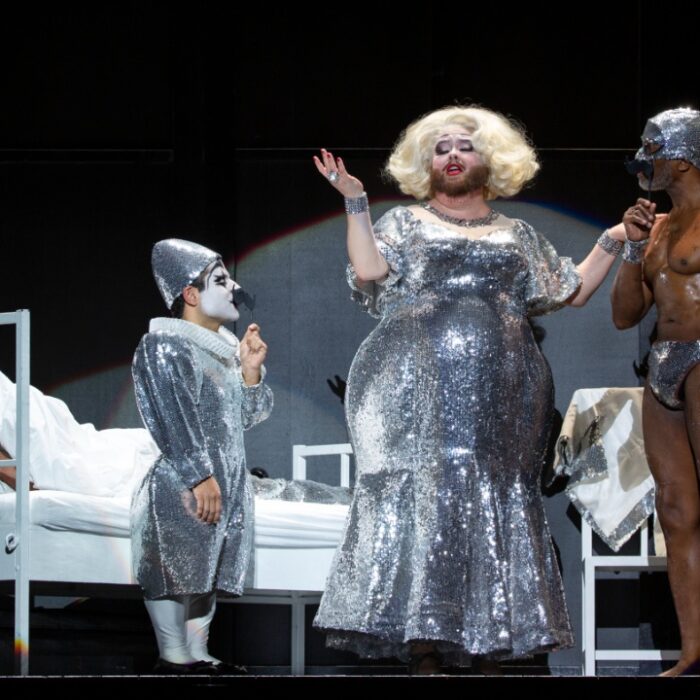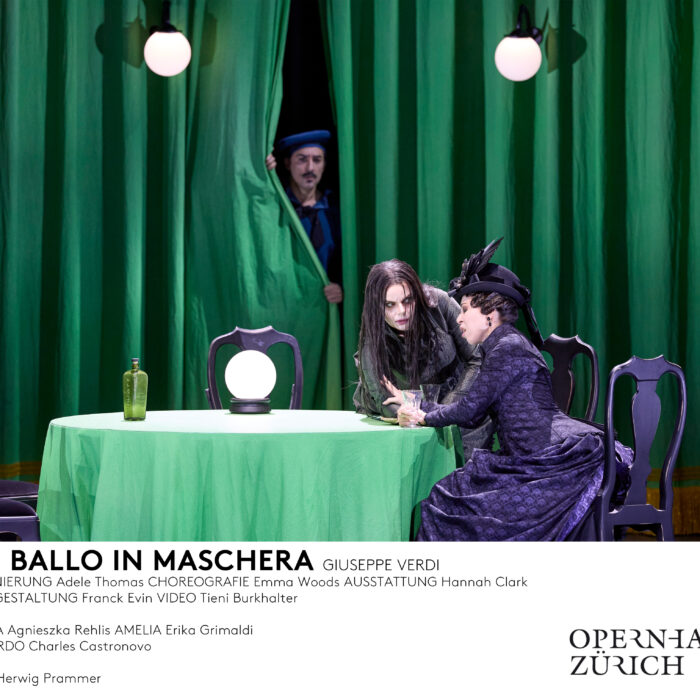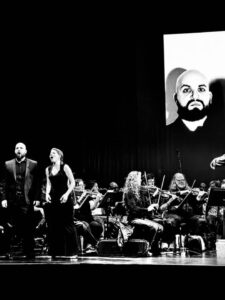
Seton Hall University Classical Concert Series 2023 Review: Cavalleria Rusticana
By Chris RuelThe traditional Cav/Pag double-bill has a flaw: “Pagliacci” overshadows “Cavalleria Rusticana.” As a result, “Cavalleria,” like an amuse-bouche, is a warmup for a more exciting opera. This bias in the Cav/Pag pairing seems illogical. Both operas are set in rural Italian/Sicilian villages, feature true-to-life characters, love triangles, and culminate in utter tragedy.
Mascagni’s “Cavalleria Rusticana” stands as the first opera within the verismo movement, a significant shift in operatic storytelling that turned the spotlight from grand historical and mythological narratives to tales echoing everyday life and human emotion. The enduring appeal of “Cavalleria” lies in its portrayal of humanity.
Stripped of its usual counterpart, “Pagliacci,” “Cavalleria Rusticana” reveals its full status as a captivating and intense opera, a sentiment echoed in Verdi’s enthusiastic praise in which he stated he could die in peace after seeing it. The power of “Cavalleria” was exemplified in the minimalist, semi-staged rendition by Seton Hall University’s Classical Concert Series and the Charles and Joan Alberto Italian Studies Institute on November 9, 2023, which highlighted the opera’s standalone power and dramatic richness.
The presentation starred Laura Zahn as Santuzza, Jeremy Brauner as Turiddu, Daniel Sutin as Alfio, Eugenia Forteza as Lola, and Ema Mitrovic as Mamma Lucia. Jason Tramm was on the podium, conducting the MidAtlantic Philharmonic Orchestra and Seton Hall University Chorus. Stefanos Koroneos of Teatro Grattacielo directed.
Vocal Dynamics Presented Challenges
In line with the customary format of semi-staged or concert operas, the orchestra was positioned behind the soloists for this production, a setup that presents its own set of acoustic challenges. The vocalists, enveloped in the orchestra’s surge of sound from behind, often find themselves compelled to amplify their singing, risking over-projection. Imagine standing at the ocean’s edge, back to the crashing waves, attempting to beckon a friend ahead of you – your voice competes with the roar of the sea, so you shout. Similarly, the singers must navigate this delicate balance, ensuring that what is loud for them doesn’t result in over-projecting.
Jeremy Brauner, in the role of Turiddu, is a familiar figure to this reviewer, having previously impressed in productions such as Ricky Ian Gordon’s “The Garden of the Finzi-Continis” and Verdi’s “I Vespri Siciliani.” His vocal prowess is well-regarded, a fact underscored by previous accolades from this publication. His Turiddu was a mosaic of emotions, ranging from whimsicality to despair. In contrast, Zahn’s Santuzza was less restrained, often veering towards vocal excess, which infused her performance with relentless fury. This approach required Brauner to adjust his portrayal in response, striving for a multi-dimensional character amidst a predominating atmosphere of rage. The result was a performance that, while dynamic, somewhat compressed the depth and complexity of both characters.
Conductor Jason Tramm skillfully ensured that Zahn’s potent vocals were not merely a response to an overwhelming instrumental backdrop. This finesse in direction casts a spotlight on the casting of Zahn, whose interpretation of the role often tilted towards unrestrained anger. She admittedly shone in moments where the character’s intense bitterness was warranted, captivating with her powerful delivery. Yet, despite the evident turmoil conveyed in her portrayal of a woman scorned, she crafted a less empathetic character.
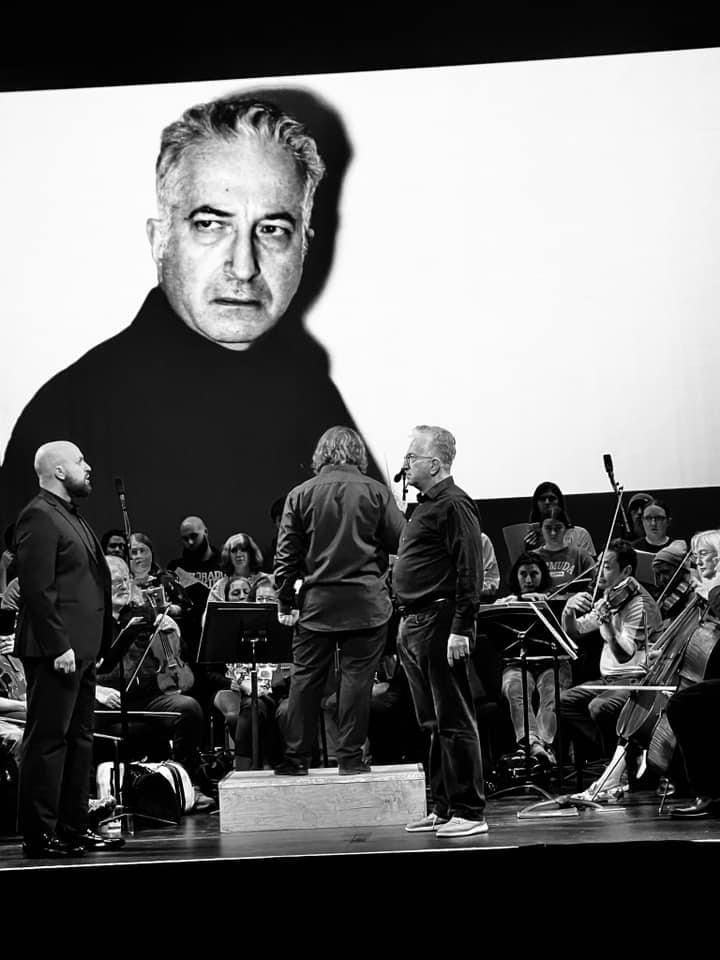
(Photo by Stefanos Koroneos)
Brauner Shines Once More
As previously noted, Jeremy Brauner was in fine vocal form, delivering stellar renditions of the “sicilienne” and “brindisi.” His portrayal of Turiddu was notably dynamic, tracing the character’s evolution from lighthearted moments with Lola to a man fraught with fear and regret. Brauner adeptly conveyed Turiddu’s internal struggle, particularly evident as he implored his mother to look after Santuzza, his remorse palpable and his actions blamed on the intoxication of the Easter celebrations. This crescendoed to the inevitable duel with Alfio, in a scene laden with foreboding, subtly hinting at Turiddu’s grim premonition of not surviving the honor-bound conflict. Despite the character’s actions, Brauner’s performance elicited a profound sense of empathy in this climactic moment, showcasing his ability to humanize a deeply flawed character.
Daniel Sutin, in the role of Alfio, delivered a compelling portrayal of a husband betrayed. His entrance, marked by an eagerness to reunite with Lola, was imbued with a vibrant and cheerful vocal quality, celebrating the simplicity of rural life. However, the mood shifts dramatically as Santuzza, in a moment of bitter revelation, discloses the truth to Alfio, setting off a chain of events that spirals downward. In the pivotal scene where Alfio refuses to join Turiddu in a toast after the spirited brindisi, Brauner and Sutin engage in a tense face-off, amplifying the drama.
The production notably chose to suggest rather than explicitly depict the symbolic Sicilian ear-biting gesture, a moment loaded with cultural significance akin to the mafioso kiss-of-death. While preserving the dramatic tension, this choice might have left those less familiar with the opera’s plot pondering its implications.
The opera culminates with Turiddu’s offstage demise, leading to a surprising and moving finale where Santuzza, Lola, and Mamma Lucia collapse simultaneously upon hearing of Turiddu’s death. The staging served as a visual representation of the overwhelming grief and guilt enveloping them. This striking tableau underscored the narrative’s emotional impact, effectively conveying the tragic consequences of the characters’ entangled fates.
Lola and Mamma Lucia
Eugenia Forteza, in the role of Lola, navigated the limitations of her stage time, crafting a portrayal of a flirtatious yet superficial charmer. In the opera’s prelude, the opening scene unfolds with Turiddu and Lola immersed in an intimate exchange. Here, Forteza aptly embodied the role of the coquette, skillfully vacillating between yielding to Turiddu’s advances and teasingly rebuffing them. Her interpretation of Lola painted a picture of a capricious and inconsiderate character, oblivious to the repercussions of her flirtations. Forteza’s performance was marked by a thoughtful use of space and gesture, coupled with her expressive singing, vividly conveying Lola’s persona.
In her portrayal of Mamma Lucia, Ema Mitrovic offered a vocally solid performance, embodying a spectrum of emotions from disapproval to sadness and bewilderment, particularly as Turiddu implores her to care for Santuzza. Intriguingly, Mitrovic’s initial appearance on stage was marked by a distinct look of irritation. This raised the question of whether Mamma Lucia had been a silent witness to the exchange between Santuzza and Turiddu or if her anger stemmed from a deeper, more intuitive understanding of the unfolding drama. Mitrovic’s portrayal subtly suggested that she perceived the impending catastrophe yet found herself powerless to avert it, adding a layer of tragic foresight to her character’s narrative.
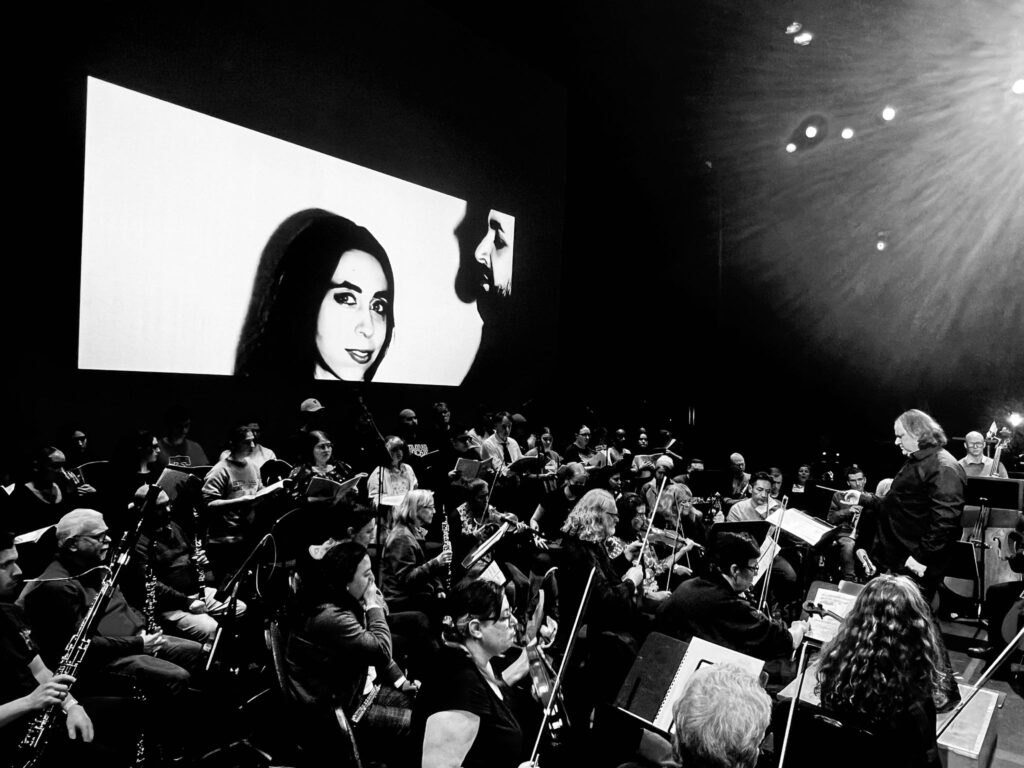
Excellent Projections, Tight Orchestra, and Impressive Chorus
The use of projections has become increasingly prevalent in opera productions, from grand stages like the Met to more intimate settings. Stage director Stefanos Koroneos masterfully demonstrated the “less is more” approach in this production. The projections, displayed on a large screen behind the orchestra and chorus, were deceptively simple, yet carried significant visual weight. These images, ranging from profiles to full-face portraits or sometimes just a pair of eyes, were rendered in a monochromatic grayscale, sharply delineating the features and enhancing their expressive power. These visuals mirror the characters’ inner worlds; for instance, a brooding image of Daniel Suton captured the tension during Turiddu and Alfio’s confrontation. This creative use of projections by Koroneos, with Quinton Tramm as the artist, brought a compelling visual dimension to the semi-staged production, enriching the narrative with impactful imagery.
Maestro Jason Tramm, guiding the MidAtlantic Philharmonic Orchestra, led a superb performance, beautifully executing the prologue, intermezzo, and all the intricate musical passages in between. The orchestra, comprising exceptionally talented musicians, delivered a performance that resonated with memorable finesse and clarity. In addition to the orchestra, Tramm skillfully directed the Seton Hall University Chorus, whose vocal quality was equally deserving of commendation. The seamless integration of the orchestra and chorus was a testament to their collective artistry.
Within the chorus, a tenor voice emerged with striking clarity, reminiscent of a soloist’s timbre. Yet, a closer inspection revealed this remarkable voice to be part of the chorus ensemble. With his resounding, clear voice, this unidentified tenor deservedly earns a resounding “bravo!” for adding an exquisite vocal texture to the already rich tapestry of the performance.
